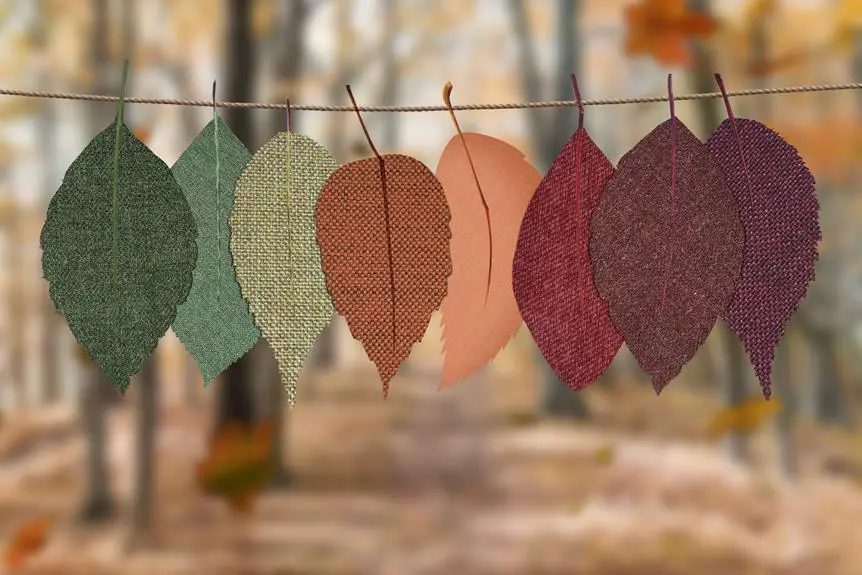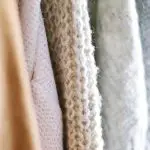Are you familiar with the saying 'a stitch in time saves nine'? When it comes to black mold and your fabrics, this adage couldn't be more relevant. Black mold can quietly infiltrate your fabrics, causing significant damage if left unchecked.
In this guide, you will discover the signs of black mold infestation, its impact on different types of fabrics, and effective methods for preventing and treating mold damage. By mastering the knowledge of black mold's effects on fabrics, you can safeguard your belongings and ensure their longevity.
Let's dive into the world of black mold and learn how to protect your fabrics from its ruinous effects.
Key Takeaways
- Black mold thrives in damp, humid environments and can easily spread to fabrics if not addressed promptly.
- Mold can cause fabric deterioration, affecting the longevity and functionality of fabrics.
- Both natural fabrics like cotton, linen, and wool, as well as synthetic fabrics like polyester and nylon, can be affected by mold.
- Proper storage, regular cleaning, and controlling indoor humidity levels are crucial for preventing mold on fabrics.
Understanding Black Mold
If you notice a musty odor or see dark, slimy patches on your fabrics, you may be dealing with black mold. Mold prevention and fabric care are crucial in addressing this issue.
Black mold, also known as Stachybotrys chartarum, can pose significant health risks through mold exposure. It thrives in damp, humid environments and can easily spread to fabrics if not addressed promptly.
To prevent black mold from ruining your fabrics, it's essential to maintain a dry and well-ventilated environment. Regularly inspecting and addressing any signs of water damage or leaks can also help mitigate the risk of mold growth on fabrics.
When it comes to fabric care, promptly addressing any spills or dampness, and ensuring fabrics are completely dry before storing them can help prevent black mold infestations.
It's important to be aware of the health risks associated with black mold exposure, which can include respiratory issues and allergic reactions. Understanding the importance of mold prevention and fabric care is key to safeguarding your fabrics and maintaining a healthy living environment.
Signs of Fabric Infestation
Are your fabrics showing signs of discoloration and emitting a musty odor? These are common indicators of black mold infestation.
Additionally, if you or your family members are experiencing unexplained allergic reactions, it could be a result of mold growth on your fabrics.
Fabric Discoloration and Odor
Check for any noticeable discoloration or musty odors in your fabrics to identify potential signs of black mold infestation. Fabric discoloration is a common sign of mold growth and can appear as green, black, or gray spots. Musty odors in fabrics are often caused by mold and mildew, indicating the need for odor removal.
To prevent discoloration, promptly dry fabrics after washing and avoid storing them in damp or humid areas. To eliminate odors, wash fabrics with vinegar or baking soda, as these natural remedies can help neutralize musty smells.
If you detect fabric discoloration or musty odors, it's crucial to address the issue promptly to prevent further mold infestation and ensure the cleanliness and longevity of your fabrics.
Allergic Reactions From Mold
Experiencing allergic reactions from mold in your fabrics can indicate a significant infestation, leading to potential health risks and the need for immediate remediation. Mold allergies can manifest through various symptoms, including sneezing, coughing, itchy eyes, and skin irritation. Prolonged mold exposure can result in more severe health effects, such as respiratory issues, headaches, and fatigue. If you notice these symptoms when in contact with moldy fabrics, it's crucial to address the issue promptly to prevent further health complications. Below is a table outlining common allergic reactions and health effects associated with mold infestations in fabrics:
| Allergic Reactions | Health Effects |
|---|---|
| Sneezing | Respiratory issues |
| Coughing | Headaches |
| Itchy eyes | Fatigue |
| Skin irritation |
Understanding these signs can help you identify and address mold infestations in your fabrics before they escalate.
Impact on Different Fabrics
Wondering how black mold can affect different types of fabrics in your home?
From causing fabric deterioration to the challenges of cleaning delicate fabrics, black mold can wreak havoc on your textiles.
But fear not, we'll also discuss effective ways to prevent mold from infesting your fabrics in the first place.
Fabric Deterioration and Mold
You may frequently notice that black mold can significantly impact the deterioration of various fabrics in your home. Mold not only causes unsightly stains and odors but can also lead to the deterioration of fabrics, affecting their longevity and functionality.
Natural fabrics such as cotton, linen, and wool are particularly susceptible to mold growth, as mold thrives in environments with high humidity and poor ventilation. Mold can weaken the fibers of these fabrics, leading to discoloration, weakening of the fabric structure, and ultimately, disintegration.
Synthetic fabrics like polyester and nylon aren't immune either, as mold can still cause staining and a musty odor.
To prevent mold from deteriorating your fabrics, it's crucial to prioritize fabric preservation and mold prevention through proper storage, regular cleaning, and controlling indoor humidity levels.
Cleaning Delicate Fabric
When cleaning delicate fabrics, consider the impact of different cleaning methods on the fabric's integrity and longevity. Gentle cleaning is crucial to preserve delicate fabrics and prevent damage. Here's a guide to help you understand the impact of different cleaning methods on various fabrics:
| Fabric Type | Suitable Cleaning Method |
|---|---|
| Silk | Hand wash using mild detergent |
| Wool | Dry cleaning or gentle hand wash |
| Lace | Hand wash with cold water and mild soap |
| Velvet | Dry cleaning or gentle brushing |
| Satin | Hand wash using cold water and mild detergent |
| Cashmere | Dry cleaning or gentle hand wash |
Preventing Mold on Fabrics
To prevent mold on delicate fabrics, start by understanding how different fabric types are susceptible to mold growth. Fabric preservation is crucial in preventing mold.
Natural fabrics like cotton and wool are more prone to mold due to their organic composition, while synthetic fabrics like polyester and nylon are less susceptible.
Proper storage and ventilation are essential for mold prevention. Ensure that fabrics are completely dry before storing them to prevent mold growth. Use a dehumidifier in areas with high humidity to reduce moisture levels.
Regularly inspect fabrics for any signs of mold and address any issues promptly. By understanding the unique characteristics of different fabrics and implementing proper fabric preservation techniques, you can effectively prevent mold and prolong the life of your fabrics.
Preventing Black Mold Growth
Prevent black mold growth by maintaining consistent humidity levels in your home. Moisture control is key to fabric protection. Ensure proper ventilation and humidity management to keep mold at bay.
Start by using dehumidifiers to maintain indoor humidity levels between 30-50%. Keep an eye on moisture-prone areas such as bathrooms, kitchens, and basements. Use exhaust fans in these areas and open windows to improve air circulation.
Regularly inspect and promptly repair any leaks in your home, including roofs, pipes, and windows, to prevent moisture buildup. Consider using mold-resistant products, such as paint and fabrics, in areas prone to dampness.
Additionally, keep furnishings and fabrics clean and dry, especially those in high-humidity areas. Clean and dry any wet or damp fabrics within 24-48 hours to prevent mold growth.
Treating Mold-Damaged Fabrics
Inspecting and assessing the extent of mold damage on your fabrics is the crucial first step in treating mold-damaged fabrics. Begin by carefully examining the fabrics for any visible mold growth and musty odors.
Separate the affected items from the rest of your belongings to prevent further contamination. Depending on the severity of the mold damage, you may be able to salvage some items through fabric restoration techniques.
For non-porous fabrics, such as polyester or nylon, wiping with a damp cloth and a mild detergent can remove surface mold. However, for porous fabrics like cotton or wool, professional mold removal techniques may be necessary.
It's important to note that attempting to clean mold-damaged fabrics without the proper knowledge and tools can spread mold spores and worsen the damage.
If the mold damage is extensive or if the items hold sentimental or monetary value, it's advisable to seek assistance from professionals specializing in fabric restoration and mold remediation.
Conclusion and Further Steps
Once you have assessed the extent of mold damage on your fabrics and taken necessary salvage measures, the next step is to consider further actions to prevent future occurrences and ensure the safety of your belongings.
The next steps involve seeking professional help and further research to address black mold issues effectively. It's crucial to consult with mold remediation specialists who can assess your property for any hidden mold growth and provide recommendations for preventing future mold infestations.
Additionally, consider investing in a dehumidifier to maintain optimal humidity levels in your home, as mold thrives in damp environments. Furthermore, conducting further research on fabric preservation methods and mold-resistant materials can help you safeguard your fabrics from potential mold damage in the future.
Stay informed about the latest advancements in mold-resistant fabrics and technologies to enhance the protection of your belongings. By taking these proactive measures and seeking professional assistance, you can effectively minimize the risk of black mold ruining your fabrics and ensure a safe and mold-free environment for your belongings.
Frequently Asked Questions
How Does Black Mold Affect the Structural Integrity of Fabrics?
Black mold weakens fabric fibers, causing structural damage. To prevent further harm, promptly address any mold growth. Restoration techniques include thorough cleaning with mold-specific products and ensuring fabrics are completely dry to discourage mold regrowth.
Can Black Mold on Fabrics Cause Health Issues for Individuals Who Come Into Contact With It?
Exposure to black mold on fabrics poses health risks, including respiratory issues and allergies. Prevent mold growth by keeping fabrics dry and well-ventilated. Regularly clean and inspect fabrics for signs of mold to safeguard your health.
Are There Any Specific Fabrics That Are More Susceptible to Black Mold Growth?
Certain fabrics, like cotton and wool, are more susceptible to black mold growth due to their organic nature. Prevention involves keeping fabrics dry and well-ventilated. If mold appears, treat it promptly to prevent further damage.
What Are the Long-Term Effects of Black Mold on Fabrics if Left Untreated?
If left untreated, black mold can cause serious long-term fabric deterioration and pose health risks. Implement preventive techniques such as proper ventilation and moisture control to mitigate the consequences of mold growth on fabrics.
Can Black Mold on Fabrics Be Effectively Removed Without Professional Intervention?
You can effectively remove black mold from fabrics with DIY techniques like using vinegar or hydrogen peroxide. Prevent future mold growth by keeping fabrics dry and well-ventilated. Care for fabrics by washing in hot water. Act promptly to minimize mold damage.
- The Essential Guide to Woven vs. Nonwoven Textiles - July 11, 2025
- All Your Questions About Nonwoven Fabric Answered - July 11, 2025
- Why Nonwoven Interfacing Is a Sewer’s Best Friend - July 11, 2025





